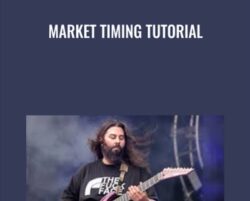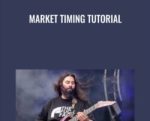DISCLAIMER : The information on the KeyTurningDates.com monthly letters, the interim reports, or in any other correspondence, either written or oral, is provided solely for educational purposes, and in no way should be construed as trading or investment advice. The aforesaid information carries no warranty, either express or implied. Past performance does not guarantee future results. Futures and option trading are extremely risky, and can result in large financial loss.KeyTurningDates.com is a monthly e-mail letter with interim e-mail updates that focuses on timing the U. S. stock market. It is intended to act as a trading tool, complementing other analytical tools at a trader’s disposal. The letters and interim updates are intended to be educational in nature, alerting the trader to the quiet undertow of the market, allowing the trader the opportunity to use this to his or her advantage by placing profitable trades.KeyTurningDates.com is all about helping the trader make money. As the legendary trader Jesse Livermore once said, “The big money is made by sitting, not thinking. Men who can both be right and sit tight are uncommon.” Livermore was right: most people trade too frequently. They want to show how right they can be. It is much more profitable to wait for just the right time, to trade less frequently and, therefore, more profitably.My name is Steve Carpenter. I live and trade in a suburb of Washington, D. C. I have traded, studied and been fascinated by the markets for more than twenty years. During that time, I have subscribed to and read many, many stock market letters; I have read many, many books and articles about the markets; I have attended seminars all over the country. I have spent many thousands of dollars on my education, including the many thousands I lost the first few years I traded. In fact, I lost enough of my money that I had to stop trading long enough to save up enough money to start over again. Needless to say, I think I have paid my dues to the market.It was after the second time I got wiped out that I started studying the legendary trader W. D. Gann. I became fascinated with charts and with technical analysis. I read all about cycles, and I became fascinated with geometric figures–squares, circles, triangles and rectangles. If Gann thought time was the most important factor in predicting the market, then I was going to learn how to use time to my advantage. I reasoned that time is almost mystical, in a way: You can’t touch it or see it, but you definitely can see its effects.With respect to the markets, time really is the only constant. Even when a stock or commodity is not trading at any point during the day, the minutes keep right on ticking away. I started to think of time as a fixed dimension that could be dissected. It dawned on me that time is actually the market’s undertow: it is quiet and unseen, but as it progresses, it is exerting more and more pressure on a market wave or swing or cycle, until that period ends and a new one begins. Over time, I developed a methodology for harnessing that market undertow and used it to “time” my trades. Once I was able to “time” my trades, I became a successful trader.I used the S & P 100 cash index (the OEX) as the basis for my analysis because I liked trading OEX options and I knew that cash leads and futures follow. Whether one trades the S&P 100 or the S&P 500 really is irrelevant, however, when it comes to the KeyTurningDates. If one can “time” the OEX, then one can use the same KeyTurningDates to “time” the S&P 500 or the Dow Jones Industrials. When those indexes peak, they normally do so on the same day or within a day of each other; the same thing happens when they bottom. In my methodology for projecting the KeyTurningDates, I use market cycles I have isolated over time and project those cycles into the future. Once a cycle is identified, its future turning dates can be forecast with incredible accuracy because these cycles repeat themselves over and over again.Forex & Trading – Foreign Exchange CourseYou want to learn about Forex?Foreign exchange, or forex, is the conversion of one country’s currency into another.In a free economy, a country’s currency is valued according to the laws of supply and demand.In other words, a currency’s value can be pegged to another country’s currency, such as the U.S. dollar, or even to a basket of currencies.A country’s currency value may also be set by the country’s government.However, most countries float their currencies freely against those of other countries, which keeps them in constant fluctuation.Get Market Timing Tutorial – Stephen Carpenter, Only Price $19Tag: Market Timing Tutorial – Stephen Carpenter Review. Market Timing Tutorial – Stephen Carpenter download. Market Timing Tutorial – Stephen Carpenter discount.
 Make Money Want You – Jason Capital
₹3,818.00
Make Money Want You – Jason Capital
₹3,818.00
 Aplicacion clinica de las tecnicas neuromusculares. Extremidades inferiores – Leon Chaitow
₹7,138.00
Aplicacion clinica de las tecnicas neuromusculares. Extremidades inferiores – Leon Chaitow
₹7,138.00
Market Timing Tutorial – Stephen Carpenter
₹2,490.00




